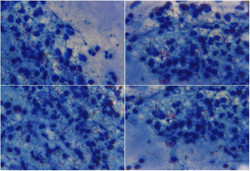Battle against tuberculosis
There are over a million multi-drug resistant cases of tuberculosis every year, 10 % of which exhibit resistance to the two most important classes of second line drugs. The EU-funded 'Pan-European network for the study and clinical management of drug resistant tuberculosis' (TB PAN-NET)(opens in new window) project brought together multi-disciplinary expertise from all over Europe to identify what drives drug resistance in different settings. Particular emphasis was given on clinical and social risk factors such as immune-depression, immigration and poverty. TB PAN-NET worked on the development of novel tools and the identification of biomarkers for tuberculosis diagnosis. Researchers discovered that serum miRNAs could serve as biomarkers for diagnosing as well as monitoring disease progression. Quantitative molecular assays were also developed for monitoring early treatment response and the preliminary evaluation of personalised regimens. To elucidate multi-drug resistance and bacterial fitness, scientists analysed the transcriptional regulatory network in drug-sensitive and -resistant Mycobacterium tuberculosis strains. They classified for the first time the mutations that cause resistance to specific drugs and set up assays for their detection. In addition, they generated genetically engineered Mycobacterium strains resistant to specific second line anti-tubercular drugs that will serve as tools for future research. Considerable effort went into training and capacity building in tuberculosis-endemic countries to perform clinical and diagnostic trials. Equally important was the training of European clinicians on the international standards and requirements of clinical management and control of resistant tuberculosis. Collectively, the TB PAN-NET consortium combined basic science, clinical and epidemiological studies to understand the emergence and transmission patterns of drug-resistant tuberculosis. The generated information should be particularly useful to health policy makers in disease management, transmission control and treatment.







